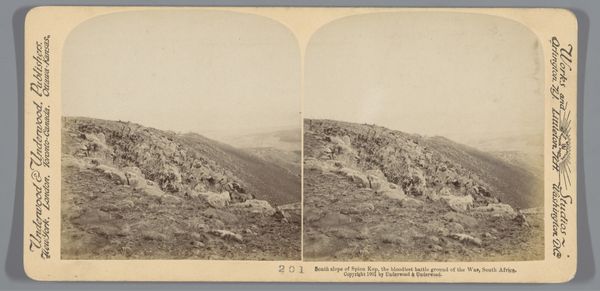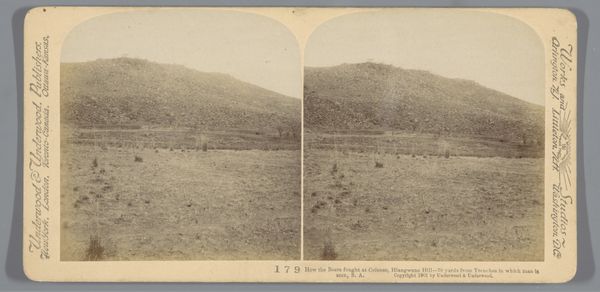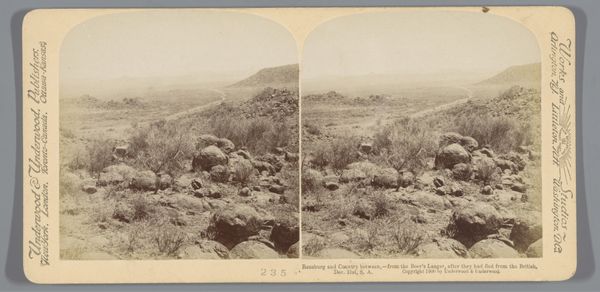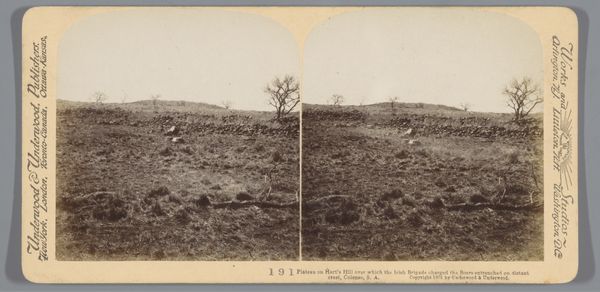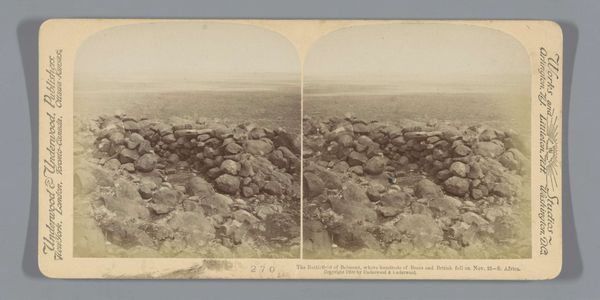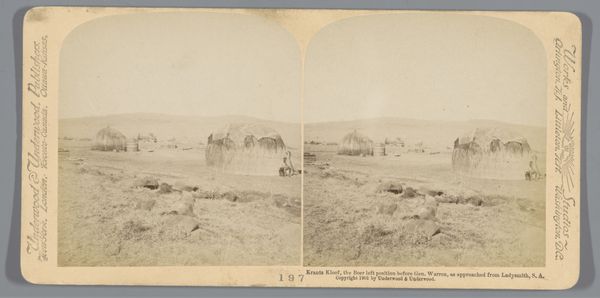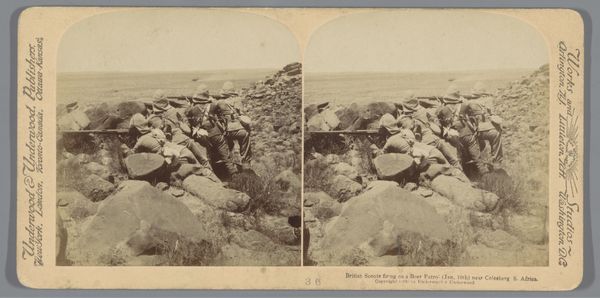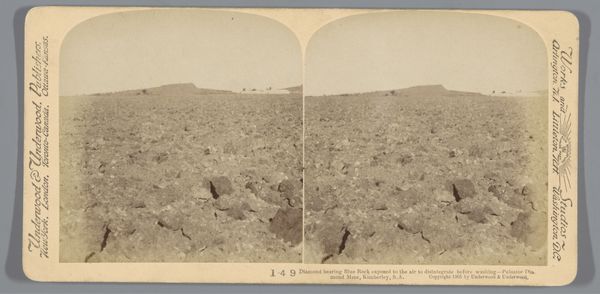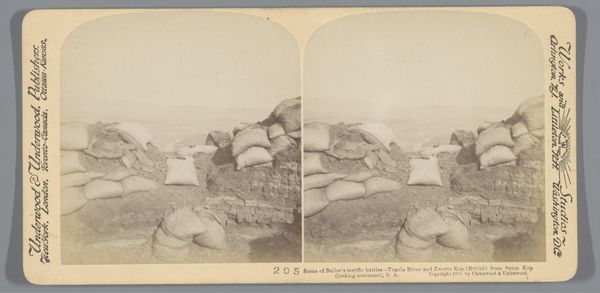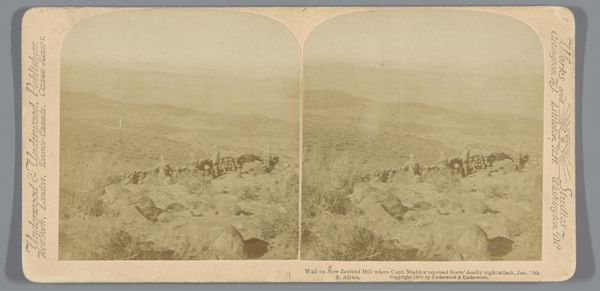
print, photography, gelatin-silver-print
#
african-art
# print
#
landscape
#
photography
#
photojournalism
#
gelatin-silver-print
#
history-painting
#
realism
Dimensions: height 88 mm, width 178 mm
Copyright: Rijks Museum: Open Domain
Curator: This unassuming gelatin silver print, taken around 1901 by Underwood & Underwood, presents us with a rather bleak landscape titled, "Loopgraaf bij Colenso uit de Tweede Boerenoorlog in Zuid-Afrika," which translates to “Trench near Colenso from the Second Boer War in South Africa.” What's your immediate response to it? Editor: Bleak is the word. It's remarkably still and somber, isn’t it? A low horizon, pale light... that dry-stacked stone wall snaking across the view plane… it gives me the impression of an exposed nerve, vulnerable, perhaps even violated. Curator: The wall signifies so much – division, conflict, perhaps even resilience in the face of adversity. Those stone barricades echo ancient borders and defenses, instantly reminding us of humanity's continuous strife across time and geography. This landscape, seemingly empty, holds a heavy silence that speaks volumes about the history it witnessed. Editor: Absolutely. And what kind of labor went into its making! Moving and stacking those stones, under harsh conditions, says a lot about what was considered a worthwhile expenditure of human effort during that period of the Boer War. Beyond strategy, there are stories embedded in that wall about power, colonialism and human endurance. Curator: And let's not forget the implicit narrative the photographers, Underwood & Underwood, created here. Beyond documentary, they sold these stereo-views to a wide audience keen for sensationalised perspectives on these faraway conflicts. The image becomes a consumable object, repackaging war as a form of exotic entertainment and reinforcing colonial attitudes towards the distant 'other'. Editor: That’s a crucial point. It turns history into product, obscuring the messy realities with distance and perhaps a certain picturesque quality inherent to the photographic technology itself. We are so distanced from the direct experiences. I'm left considering the many complex layers of meaning imbued by image-making in moments of crisis. Curator: Indeed, looking at how conflicts like these get recorded visually helps decode so much of their continued cultural significance. Thank you. Editor: Likewise; that intersection of material realities, social forces, and potent symbolism certainly complicates the act of observation!
Comments
No comments
Be the first to comment and join the conversation on the ultimate creative platform.


